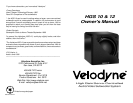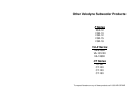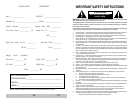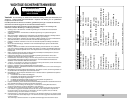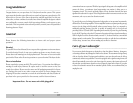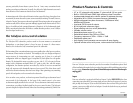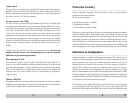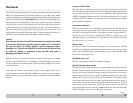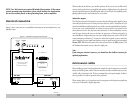
29
continued. . .
☞☞
Installation
——————————————————————————————————————————————
Your new Velodyne servo subwoofer provides for a number of installation options. Read
all the installation information below in order to determine which installation option is best
for your system. Remember to perform all installation procedures with subwoofer
unplugged!!!
Inputs
Your new subwoofer is equipped with line-level inputs. Use the LINE LEVEL jacks when
connecting your subwoofer to a pre-amp, signal processor, line-level crossover, or receiver
with pre-amp level outputs. If your receiver/electronics does not have RCA type line level
outputs, you must use a high to low level adapter. Consult the dealer where you purchased
the unit for further details.
Product Features & Controls
————————————————————————————————
• 10" or 12" subwoofer with tandem 3" voice coils & 310 oz. motor
• Built-in 1000/1250 watt (RMS) high efficiency class D amplifier
• Accelerometer based servo control system for extreme accuracy
• Adjustable (40 to 120Hz) low-pass crossover (defeatable)
• Multiple staggered low-pass crossovers; 12dB/octave initial,
48dB/octave ultimate
• Line-level (RCA) inputs & outputs
• 80 Hz high-pass crossover output
• Signal sensing auto turn on/off (defeatable)
• Variable volume control
• Selectable phase control (0˚ or 180˚)
• Selectable subsonic filter (20Hz or 35Hz)
• Frequency response of 20Hz - 120Hz +/- 3dB
• Detachable power cord
• Anti-clipping circuit prevents over excursion & amp clipping
• Optional remote control with power, volume and mute functions
systems, particularly home theater systems. Even at 1 watt, many conventional units
produce several percent distortion. Secondly, the odd order, higher harmonics are much
more offensive to the human ear than the closer 2nd harmonic.
An interesting result of this reduced distortion is that some of the bass, when played over
an extremely accurate subwoofer system, seems to actually be missing. The truth, however,
is that the "missing" bass was never there to begin with! Distortion products of conventional
woofers actually add to the bass spectrum making it appear louder than recorded. This is
due to the additional and unwanted harmonics (distortion) of the fundamental signal.
While conventional subwoofers offer little to combat distortion products, we at Velodyne
have developed another way. . .
The Velodyne servo-control solution
––––––––––––––––––––––––––––––––––––––––––––––––––––––––––––
The Velodyne HGS subwoofers produce sound in the same manner as conventional
loudspeakers: a cone-shaped piston is forced to move by means of a linear motor.
However, this is about the only conventional part of the subwoofer.
We determined that conventional motors are unacceptable when called upon to produce
the amount of linear motion we desired. This inadequacy led us to design an improved
motor structure by incorporating two coils, operating out of phase in a push-pull
configuration within two magnetic gaps & suspended by dual spiders for even greater
linearity. We designed this motor to produce over one inch (1-1/4" to be exact) of linear
motion, with a maximum mechanical limit of 2" peak to peak. Also, with this unique
configuration, the distortion products are reduced by a factor of two over conventional
single coil structures with dramatically improved cone control. This driver alone would
result in less distortion than any other non servo design. After optimizing every remaining
part of the loudspeaker, we then turned to the electronics.
As in our other servo products, we then incorporated closed-loop accelerometer based
servo-control of the loudspeaker. At the heart of this control system is a low mass
accelerometer rigidly attached to the voice coil. The accelerometer continuously monitors
cone motions, providing a feedback signal for the servo control circuitry. This high-gain
system is designed to improve linearity and reduce distortion approximately 30 times over



